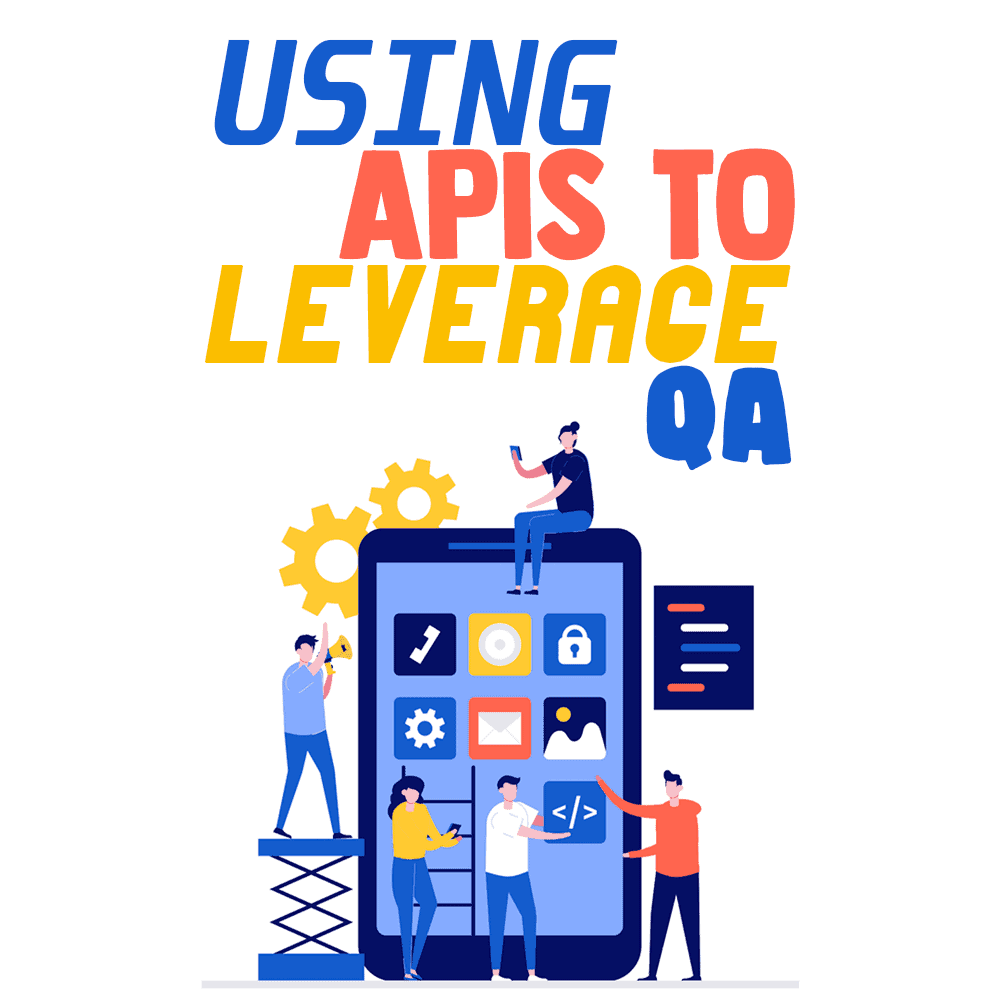
For example, every time you check the weather on your phone, you are using an API. That’s because Google itself doesn’t source weather data, but instead it sources third-party information.
The overwhelming success of tech giants like Amazon, Salesforce, and eBay was helped by the introduction of their APIs, making their platforms operative to external users and easily integrated into the workflows of companies from a whole range of industries.
Moreover, the popularization of APIs led to a trend toward more open computing. This trend has led the tech world to begin to open up its software, encouraging more synergy between systems.
Paired with the explosion in popularity of mobile apps, new and innovative uses for APIs began cropping up, to the point that, these days, there seems to be an API for everything. What all these developments mean is that APIs are becoming increasingly integral to the life of a software developer.
So, what does this have to do with quality assurance (QA)?
QA is the process of ensuring that the software you deliver is of the highest possible quality. By testing software effectively, you can be assured that customers are receiving a quality product.
Traditionally, QA has been seen as a time-consuming process. Software testing was previously perceived as a cost center that took up precious resources. This was due to the disconnect between developers and QA, with QA tools providing slower test results and many developers viewing QA as a bottleneck to their success.
But now, as the tech market becomes increasingly competitive, the importance of quality has become much more prevalent. And so, companies are focusing more on ensuring they deliver a bug-free product that impresses customers and ensures that they don’t turn to a competitor.
The challenge here is enabling engineering teams to conduct software testing in a manner that is fast and doesn’t slow down the software development life cycle (SDLC).
That’s where APIs come in.
How Do APIs Leverage QA Testing?
As every developer and programmer knows, there is ever-increasing pressure to deliver at speed. The competitive nature of the tech industry means that each team is always racing to release new features before their competitor, attempting to meet the deadlines included in lightning-fast SDLCs. Now, add to this pressure the need for thorough testing.
As a result of these requirements, there has been a significant rise in the use of software products designed specifically to streamline processes. These products help scale engineering team capabilities without the need for a recruitment budget or many extra hands. Within this product-sphere, there has similarly been growing usage of platforms specifically designed to speed up testing processes.
APIs can help here, especially in quality assurance.
With the use of APIs from software testing platforms, engineering teams can integrate testing directly into their development lifecycle. This integration softens the edges of QA, making it a continuous process.
For example, if you are using a crowdtesting platform that doesn’t use an API, you might need to come out of your code, log into the platform, upload your test scripts, and run tests. These processes add unnecessary blockers to your release cycle and can become an irritating task to repeat time and time again. Replacing the process with APIs reduces the friction between development and QA, making the experience a streamlined process.
A Closer Look at the Benefits
You can streamline your SDLC when you use APIs as part of the quality assurance process. It’s almost like APIs are the oil on the wheels of your development train, making sure it runs smoothly and doesn’t slow down.
But let’s dive deeper into what that means.
Reduce Friction and Increase Ease of Testing
We know that, in many engineering teams, QA can be seen as the bottleneck to success.
Especially in setups where QA isn’t fully integrated into your SDLC through continuous testing, QA can become one of the last steps in the development process. In the waterfall method, for example, testing is only stage 4 out of 5, meaning that it takes place just as the team is wanting to release and get the job done. The last-minute nature of this method leaves little room for time to ensure the quality is just right.
That issue means that, for many developers, QA is seen as a problem creator, rather than a problem solver—the team works hard to meet tight deadlines, but then it is faced with a brick wall right at the end.
So how do APIs ameliorate this pain point?
Let’s say you are using an external automation testing tool. If this tool has API capabilities, you can integrate it directly into your existing tools and processes. Therefore, you can run automated tests at any stage in your SDLC, and do so seamlessly.
There is no waiting period for test results, and bug reports can be shared and accessed easily. This process reduces the friction between QA and the rest of your SDLC, so that testing can become an achievable and regular part of your development process.
Increase Speed of Release

APIs are used for their speed in many different situations—Facebook APIs, Weather APIs, Twitter APIs, and more. In fact, they can be used for pretty much anything you can think of! That’s because in the ever-competitive tech world, if something can be done faster with an API connecting to another tool, then a team is going to do their best to achieve it.
Seamless customer experiences lead to happy customers, so any process that delivers this is a welcome tool.
The same is the case with software development.
We want to execute our tasks quickly, and we don’t want to wait. APIs provide this capability, as they are fast and reliable. You never have to wait for an individual to source, log, and provide you with test results. An API can do this for you instead by, for example, importing bug reports directly into your existing tool and systems, like Jira.
Similar to the benefit of reducing friction, using APIs with your QA processes aids you in achieving those lightning-quick SDLCs that cause many software developers nightmares. It’s all about helping you reach those targets without fear of slowing down.
Improve Ease of Integration with External Providers
Using external tools to improve QA processes is a common method in software development. That’s because there are not many software development teams that have an endless budget and recruitment possibilities—especially not in the current environment.
External providers can offer bug trackers, automated testing, crowdtesting (like Global App Testing), functional testing, and more. But if some of these solutions don’t offer an API, it may be that they don’t actually speed up your release velocity.
That’s because each product has its own platform with new accounts to create, platforms to navigate and understand, and logins to find in the depths of your Google Drive.
However, when external providers create APIs for your team, it can reduce the risk of bottlenecks. That means teams can fully utilize software solutions and get the most out of what they are paying for.
After all, we want to get more bang for our buck, and we don’t want to feel like it was difficult to do so.
Leveraging Your QA with APIs
Quality is key in today’s market. That’s because in an oversaturated, highly competitive tech landscape, customers expect a fantastic product. If you don’t provide it, the likelihood is they will delete the app in favor of your competitor.
But that doesn’t mean QA needs to slow you down. Testing doesn’t have to be a big, clunky machine that creates problems for software developers.
APIs leverage external QA tools, integrating seamlessly into your SDLC, so that your test results, test scripts, and more can be accessed easily and without friction.
APIs can help you:
- Reduce friction and increase ease of testing.
- Increase speed of release velocity.
- Improve ease of integration with external providers.
Overall, the effect is to reduce the view that quality assurance is a bottleneck. Instead, software testing through the use of APIs becomes a seamless, streamlined process.
